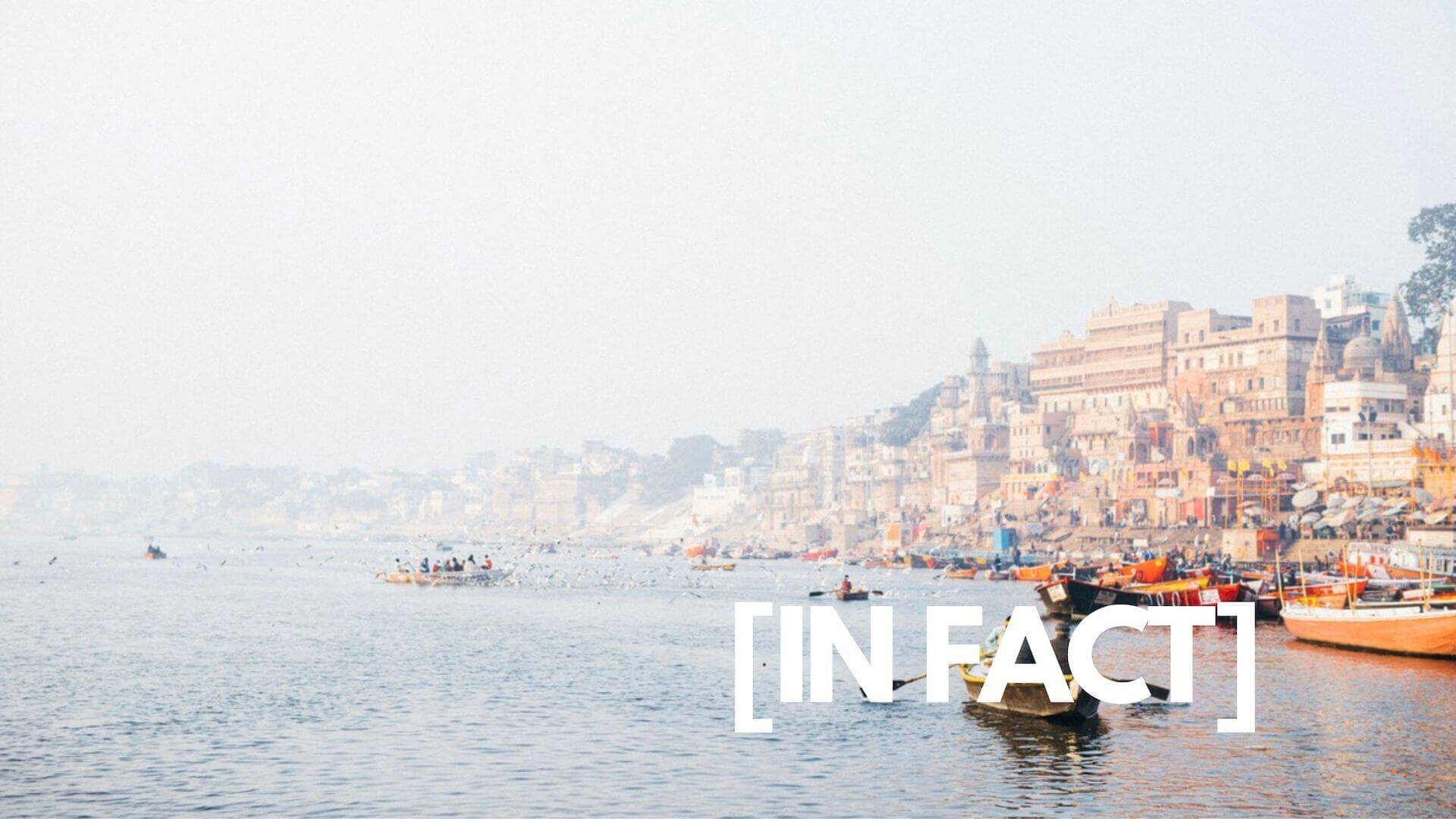
20 Fascinating Facts About the Ganges River, Largest River in India
Have you ever wondered which is the largest river in India? You might think it is the Indus, the Godavari, or the Narmada, but the answer is actually the Ganges. Furthermore, the Ganges River is not only the longest river in India but also the third largest in the world by discharge. It is a natural wonder that has shaped India’s geography, history, culture, religion, ecology, and economy for thousands of years. It is also a sacred symbol of life and faith for millions of Hindus who worship it as Goddess Ganga.
In this article, we will share with you 20 fascinating facts about the Ganges River, the largest river in India. You will learn about its origin, its course, its tributaries, its significance, its challenges, and its future. By the end of this article, you will have a deeper appreciation and understanding of this amazing river and its importance to India.
How to Measure the Largest River in India?
There are different ways to measure the largest river in India, depending on what criteria you use. Some of the common criteria are:
- Length: The distance from the source to the mouth of the river.
- Drainage area: The area of land that drains into the river.
- Discharge: The volume of water that flows out of the river per unit time.
Each of these criteria has its advantages and disadvantages and may give different results for the largest river in India. For example, firstly, length may not reflect the actual size or influence of the river, as some rivers may have longer but narrower courses than others. Secondly, drainage areas may not account for variations in rainfall or evaporation across different regions. Thirdly, discharge may vary depending on seasons or human activities such as dams or irrigation. Therefore, it is important to consider multiple criteria when comparing rivers and their sizes. In this article, we will use all three criteria to rank some of the candidates for the largest river in India. We will also look at some other factors that make these rivers unique and important for India.
Candidates for the Largest River in India
Based on these criteria, some of the candidates for the largest river in India are:
1. Ganges
- Length: 3,084 km
- Drainage area: 1,200,000 km²
- Discharge: 41,199 m³/s
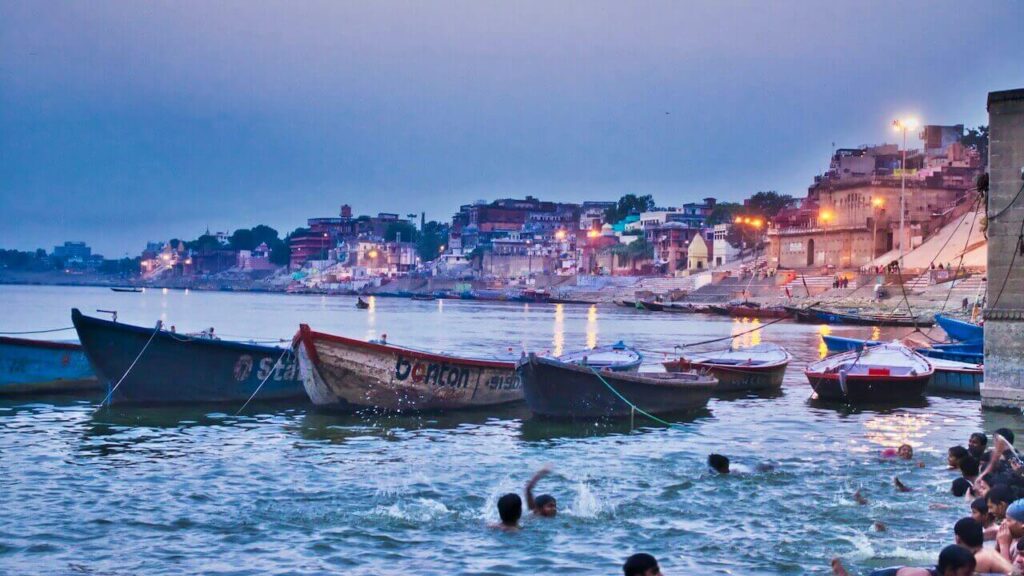
The Ganges is the longest river in India and has the third-largest discharge in the world. It originates from the Gangotri Glacier in Uttarakhand and flows into the Bay of Bengal. To Hindus, the Ganges River is sacred. Additionally, it is home to many species of wildlife, such as dolphins, crocodiles, turtles, and fish. It also supports millions of people who live along its banks and depend on it for agriculture, industry, and tourism. Moreover, the Ganges River is famous for its cultural and historical significance, as it has witnessed the rise and fall of many civilizations and empires. It has been a source of inspiration and creativity for many poets, artists, musicians, and writers. The Ganges River is also a symbol of India’s diversity and unity, as it connects people from different regions, languages, religions, and backgrounds.
2. Indus
- Length: 3,200 km
- Drainage area: 1,085,000 km²
- Discharge: 6,600 m³/s
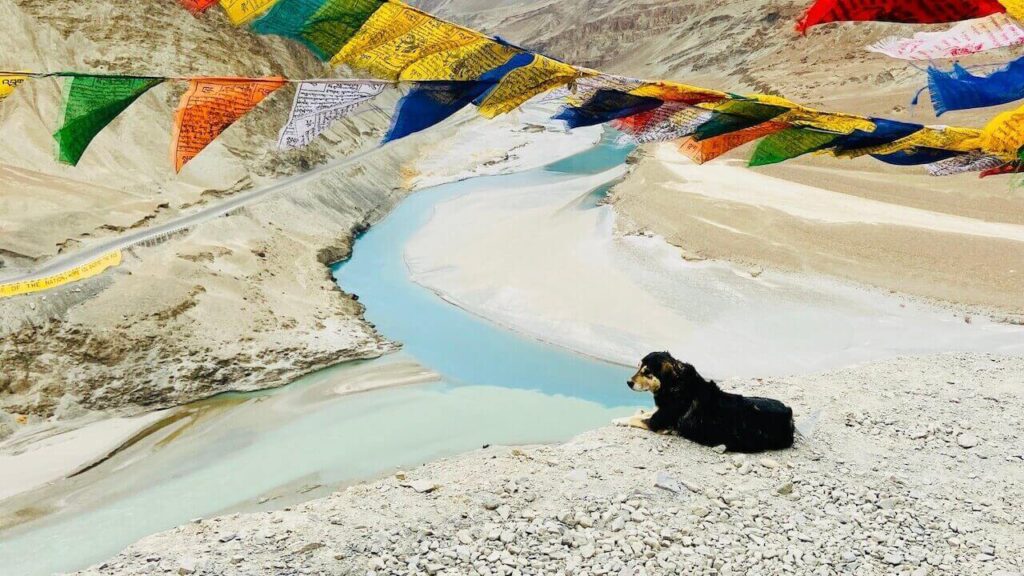
The Indus is the second longest river in India and has a relatively low discharge. It originates from the Tibetan Plateau near Lake Mansarovar and flows mainly through Ladakh in India before entering Pakistan and ending in the Arabian Sea. Particularly, the river is one of the oldest civilizations in the world. It has been a source of trade and culture for thousands of years. In addition, it provides water for irrigation and hydropower for both India and Pakistan. Plus, the Indus River is a symbol of peace and cooperation, as it is shared by two nuclear-armed neighbors who have agreed to manage its waters through a treaty.
The Indus River is also known for its natural beauty and diversity, as it passes through mountains, valleys, deserts, and plains. It hosts a variety of flora and fauna, such as snow leopards, ibexes, markhors, brown bears, and marmots.
3. Godavari
- Length: 1,465 km
- Drainage area: 312,812 km²
- Discharge: 3,505 m³/s
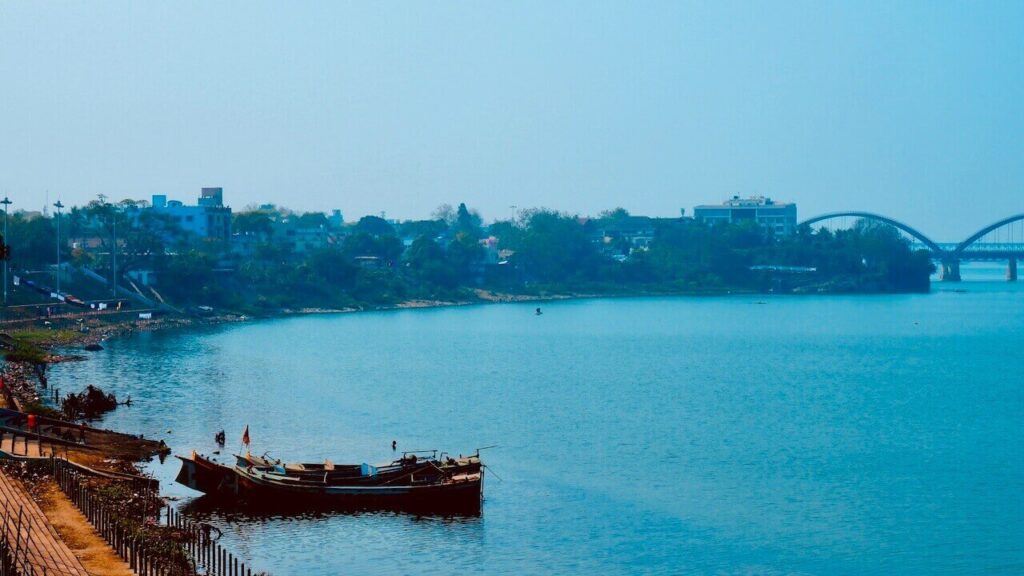
The Godavari is the largest river in South India and has a moderate discharge. It originates from the Western Ghats near Nashik in Maharashtra and flows into the Bay of Bengal. Also, it is well-known as Dakshin Ganga or South Ganges because of its religious significance for Hindus. It hosts several pilgrimage sites along its course and is rich in biodiversity and natural resources.
The Godavari River is also known for its economic and social importance. It provides water for irrigation, drinking, fishing, and navigation. It also supports many industries such as textiles, paper, sugar, oil, and power. Furthermore, the Godavari River is a symbol of regional identity and pride, as it represents the culture and heritage of the Telugu-speaking people who live in Andhra Pradesh and Telangana.
4. Narmada
- Length: 1,312 km
- Drainage area: 98,796 km²
- Discharge: 1,447 m³/s
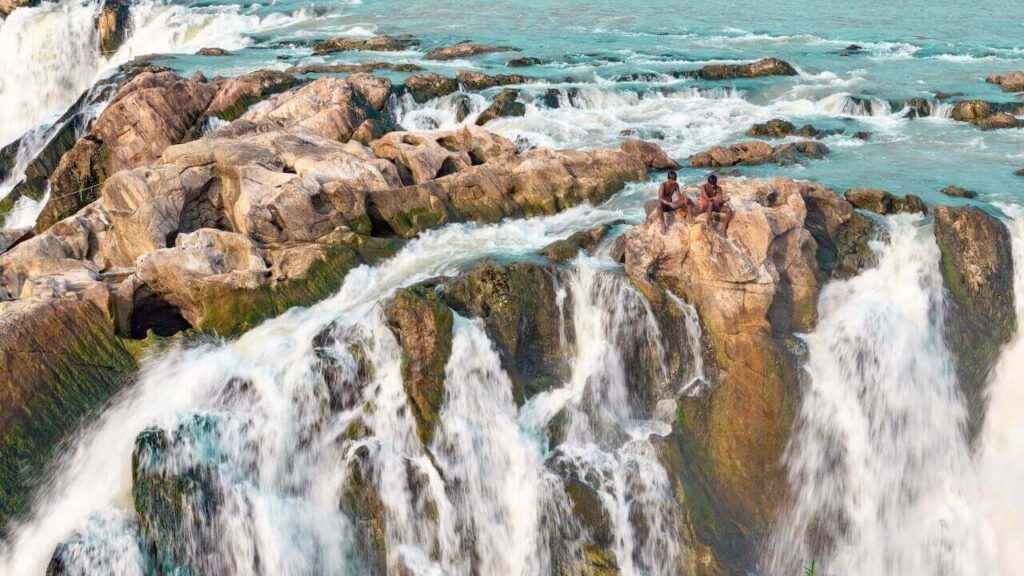
The Narmada is the largest west-flowing river in India and has a discharge of 1,447 m³/s. It originates from the Amarkantak range of mountains in Madhya Pradesh and flows into the Arabian Sea. The Narmada is one of the few rivers in India that flows in a rift valley and forms several waterfalls and gorges along its way. Besides that, it is revered by Hindus as the daughter of Lord Shiva and is believed to have the power to cleanse sins.
The Narmada River is also known for its environmental and political significance, as it has been the site of many controversies and conflicts over its development and conservation. It has been the subject of many protests and movements by activists, tribals, farmers, and fishermen who oppose the construction of dams or demand fair compensation or rehabilitation. The Narmada River is also a symbol of resistance and struggle, as it represents the voice and rights of the marginalized and oppressed sections of society.
20 Facts about the Ganges River, the Largest River in India
Names and Sources: The Many Faces and Origins of the Ganges River
1. The Ganges River has several names in different languages and regions. Some of them are Ganga (Sanskrit), Gangā (Hindi), Padma (Bengali), Meghna (Assamese), Bhagirathi (Uttarakhand), Alaknanda (Uttarakhand), Hooghly (West Bengal), Padma (Bangladesh), and Meghna (Bangladesh).
2. The Ganges River has several sources in different places. The main source is the Gangotri Glacier in Uttarakhand, which is also known as Gaumukh or Cow’s Mouth. Other sources include glaciers such as Kedarnath, Nanda Devi, Kamet, and Satopanth.
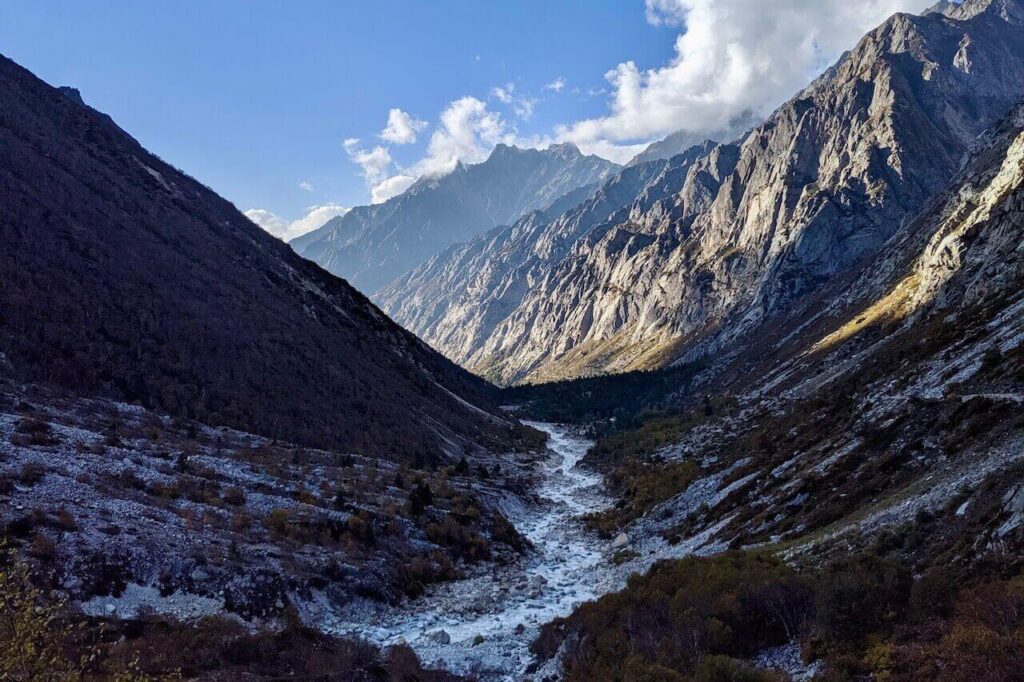
Influence and Inspiration: The Ganges River as a Source of Life, Civilization, and Faith for India
3. The Ganges River is also the most sacred river in the world. It is believed to be the embodiment of Goddess Ganga, who descended from heaven to purify the earth. Millions of Hindus visit the river every year to perform rituals such as bathing, offering prayers, and immersing ashes. The most auspicious time to visit the river is during the Kumbh Mela, a festival that occurs every 12 years and attracts millions of pilgrims from all over the world.
4. The Ganges River is also the most influential river in the world, as it has shaped India’s geography, history, culture, religion, ecology, and economy for millennia. Indeed, it has been a source of life, civilization, and faith for countless generations of Indians. Besides that, it has inspired many poets, artists, musicians, and writers with its beauty and spirituality. Also, it has witnessed many wars, invasions, revolutions, and movements that have changed the course of India’s history. The Ganges River is truly a living legend and a national icon for India.
Tributaries and Confluences: The Mighty Streams and Sacred Junctions of the Ganges River
5. The Ganges River has several tributaries that join it along its course. Some of them are Yamuna (the largest tributary), Ghaghara (the longest tributary), Gandak (the deepest tributary), Kosi (the most destructive tributary), Son (the largest peninsular tributary), Mahananda (the easternmost tributary), Damodar (the most polluted tributary), and Chambal (the most notorious tributary).
6. The Ganges River has several confluences or sangams where two or more rivers meet. Some of them are Devprayag (where Bhagirathi and Alaknanda meet), Allahabad or Prayagraj (where Ganges and Yamuna meet), Patna or Pataliputra (where Ganges and Son meet), Farakka (where Ganges and Mahananda meet), Murshidabad (where Ganges and Bhagirathi meet), Haldia (where Hooghly and Rupnarayan meet), Chandpur (where Padma and Meghna meet), and Chandannagar (where Hooghly and Damodar meet).
Bridges and Dams: The Marvelous Structures and Controversial Projects on the Ganges River
7. The Ganges River has several bridges that cross it at different points. Some of them are Lakshman Jhula (a suspension bridge in Rishikesh), Ram Jhula (another suspension bridge in Rishikesh), Naini Bridge (a cable-stayed bridge in Allahabad), Rajendra Setu (a rail-cum-road bridge in Mokama), Mahatma Gandhi Setu (a cantilever bridge in Patna), Farakka Barrage (a barrage and bridge in Farakka), Vidyasagar Setu (a cable-stayed bridge in Kolkata), and Hardinge Bridge (a steel truss bridge in Bangladesh).
8. The Ganges River has several dams and barrages that regulate its flow and generate electricity. Some of them are Tehri Dam (the highest dam in India), Maneri Dam, Bhimgoda Barrage, Narora Barrage, Kanpur Barrage, Allahabad Barrage, Farakka Barrage, Bansagar Dam, Sone Barrage, Maithon Dam, Panchet Dam, and Farakka Power Plant.
Islands and Cities: The Diverse Lands and Vibrant Cultures along the Ganges River
9. The Ganges River has several islands that are formed by its delta or by its meandering course. Some of them are Gangotri Island (the largest island in the Ganges delta), Sagar Island (the southernmost island in the Ganges delta), Majuli Island (the largest river island in the world), Bhola Island (the largest island in Bangladesh), Munshiganj Island (the most densely populated island in the Ganges delta), and Patliputra Island (the historical capital of ancient India).
10. The Ganges River has several cities and towns that are located along its banks. Some of them are Haridwar (the gateway to the Himalayas), Rishikesh (the yoga capital of the world), Varanasi (the oldest living city in the world), Allahabad or Prayagraj (the city of sangams), Patna or Pataliputra (the ancient seat of learning and power), Kolkata (the cultural capital of India), Dhaka (the capital of Bangladesh), and Chittagong (the largest port of Bangladesh).
Temples and Festivals: The Spiritual Sites and Joyful Celebrations on the Ganges River
11. The Ganges River has several temples and shrines that are dedicated to various gods and goddesses. Some of them are Gangotri Temple (where Goddess Ganga is worshipped), Vishwanath Temple (where Lord Shiva is worshipped), Kashi Vishwanath Temple (where Lord Shiva is worshipped), Dashashwamedh Ghat (where Lord Brahma is worshipped), Triveni Sangam (where Goddess Saraswati is worshipped), Anand Bhavan (where Mahatma Gandhi is remembered), Dakshineswar Kali Temple (where Goddess Kali is worshipped), and Kalighat Kali Temple (where Goddess Kali is worshipped).
12. The Ganges River has several festivals and events that are celebrated along its banks. Some of them are Kumbh Mela (the largest religious gathering in the world), Ganga Dussehra (the day when Goddess Ganga descended to earth), Ganga Saptami (the birthday of Goddess Ganga), Ganga Aarti (a ritual of offering lamps to the river), Dev Deepawali (the festival of lights on the river), Chhath Puja (a festival of sun worship on the river), Makar Sankranti (a festival of kite flying on the river), Holi (a festival of colors on the river), and Durga Puja (a festival of worshipping Goddess Durga on the river).
Legends and Stories: The Mythical Tales and Historical Events of the Ganges River
13. The Ganges River has several legends and stories that are associated with it. Some of the stories are:
- King Bhagiratha, who brought Goddess Ganga to earth.
- King Shantanu, who married Goddess Ganga.
- Lord Rama, who crossed the river to reach Lanka.
- King Sagara, whose 60,000 sons were burnt to ashes by Lord Shiva.
- King Bali, who was granted a boon by Lord Vishnu.
- Lord Buddha, who attained enlightenment near the river.
- Guru Nanak, who disappeared into the river for three days.
- Rabindranath Tagore, who composed many poems and songs on the river.
Issues and Initiatives: The Pressing Problems and Promising Solutions for the Ganges River
14. The Ganges River has several environmental and social issues that affect its quality and quantity. Some of them are pollution, overuse, climate change, development, deforestation, erosion, sedimentation, flooding, drought, salinity, biodiversity loss, habitat destruction, human-animal conflict, waterborne diseases, poverty, illiteracy, gender inequality, caste discrimination, and violence.
15. The Ganges River is the most polluted river in the world, due to the dumping of sewage, industrial waste, agricultural runoff, and cremated remains. It is estimated that more than 1.5 billion liters of untreated sewage enter the river every day, along with tons of plastic, chemicals, and metals. Therefore, this poses a serious threat to the health and well-being of the people and wildlife that depend on the river.
16. The Ganges River has several initiatives and projects that aim to conserve and restore it. Some of them are:
- Namami Gange or National Mission for Clean Ganga, a flagship program of the Indian government.
- GAP or Ganga Action Plan, a previous program of the Indian government.
- WWF or World Wide Fund for Nature, an international organization that works for wildlife conservation.
- IUCN or International Union for Conservation of Nature, an international organization that works for nature conservation.
- WII or Wildlife Institute of India, a national institute that works for wildlife research.
- CSE or Centre for Science and Environment, a national NGO that works for environmental awareness.
- SANDRP or South Asia Network on Dams Rivers and People, a regional network.
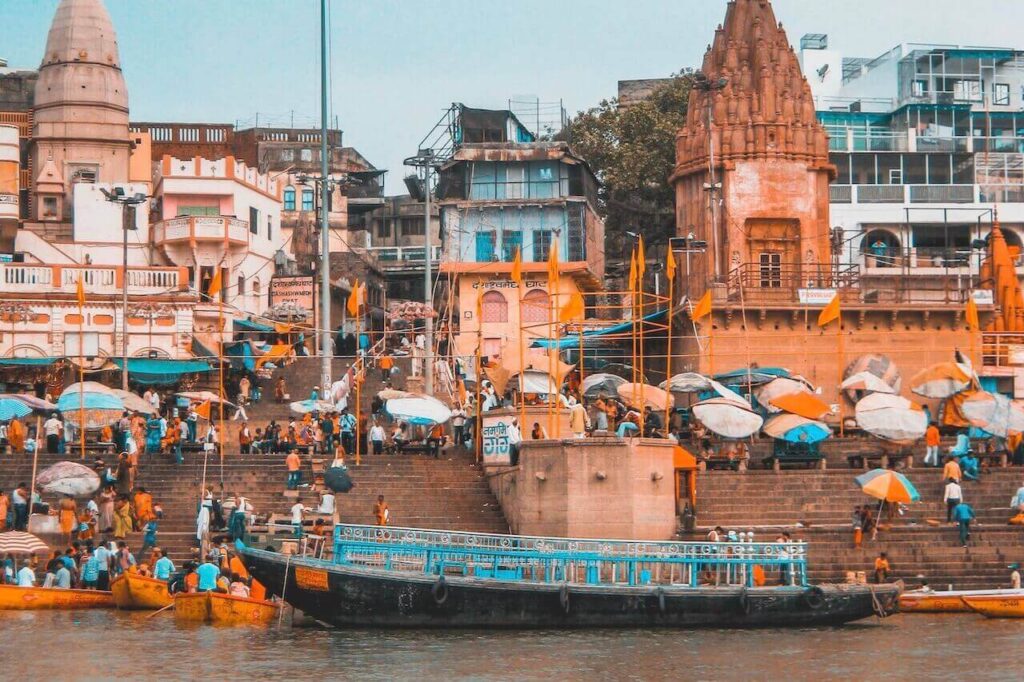
Benefits and Challenges: The Valuable Opportunities and Difficult Obstacles for the Ganges River
17. The Ganges River is also the most biodiverse river in the world. In fact, it hosts more than 140 species of fish, 90 species of amphibians, and 40 species of reptiles. It is also home to many endangered and threatened species, such as the Ganges river dolphin, the Ganges shark, the Gharial crocodile, and the Gangetic turtle. The river also supports many migratory birds, such as cranes, storks, pelicans, and flamingos.
18. The Ganges River has several benefits and opportunities that it offers to India and the world. Some of them are water security, energy security, food security, livelihood security, cultural diversity, religious harmony, heritage preservation, tourism promotion, education enhancement, health improvement, gender empowerment, social justice, peacebuilding, and global leadership.
19. On the other hand, the Ganges River has several challenges and threats that it faces from India and the world. Some of them are population growth, urbanization, industrialization, globalization, consumerism, materialism, corruption, terrorism, extremism, fundamentalism, nationalism, and regionalism.
Hopes and Dreams: The Inspiring Visions and Aspirations for the Ganges River
20. The Ganges River has several hopes and dreams that it inspires in India and the world. Some of them are clean water, green energy, organic farming, sustainable development, ecological balance, wildlife conservation, human dignity, spiritual awakening, artistic expression, scientific innovation, social transformation, and global cooperation.
Why the Ganges River Matters for India and the World
In conclusion, these are some of the facts about the Ganges River, the largest river in India. The Ganges River is a remarkable natural phenomenon that has influenced India’s geography, history, culture, religion, ecology, and economy for millennia. It is also a sacred symbol of life and faith for millions of Hindus who worship it as Goddess Ganga. The Ganges River is truly a wonder of nature and a treasure of India that deserves our respect and protection.
However, the Ganges River also faces many threats and challenges from pollution, overuse, climate change, and development. These threats not only affect the health and well-being of the river itself but also the people and wildlife that depend on it. Therefore, it is crucial to take action to conserve and restore the Ganges River and its ecosystem. By doing so, we can ensure that the Ganges River continues to be a source of life, civilization, and faith for India and the world.
The Broad Life introduces to you great, inspirational books for your wanderlust. They aren’t just simple travel, each book recounts the author’s journey to discover and learn many awesome things from new civilizations and places.
> READ MORE: THE BEST TRAVEL BOOKS OF ALL TIME
‘PIN IT’ NOW TO SAVE THE FACTS ABOUT THE GANGES RIVER AND SUPPORT THE BLOG
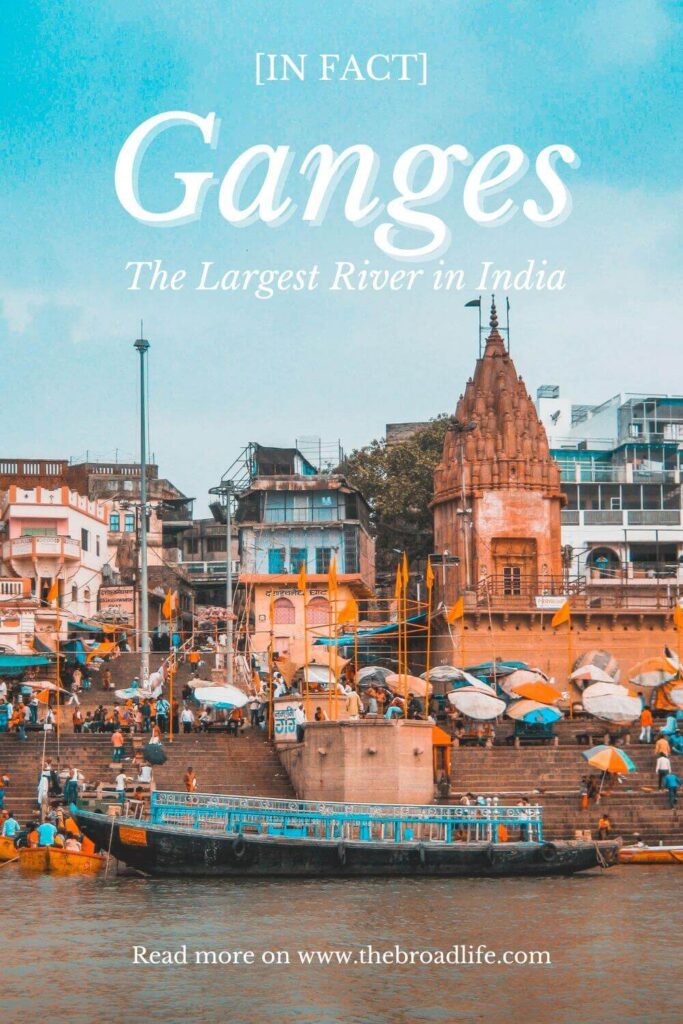
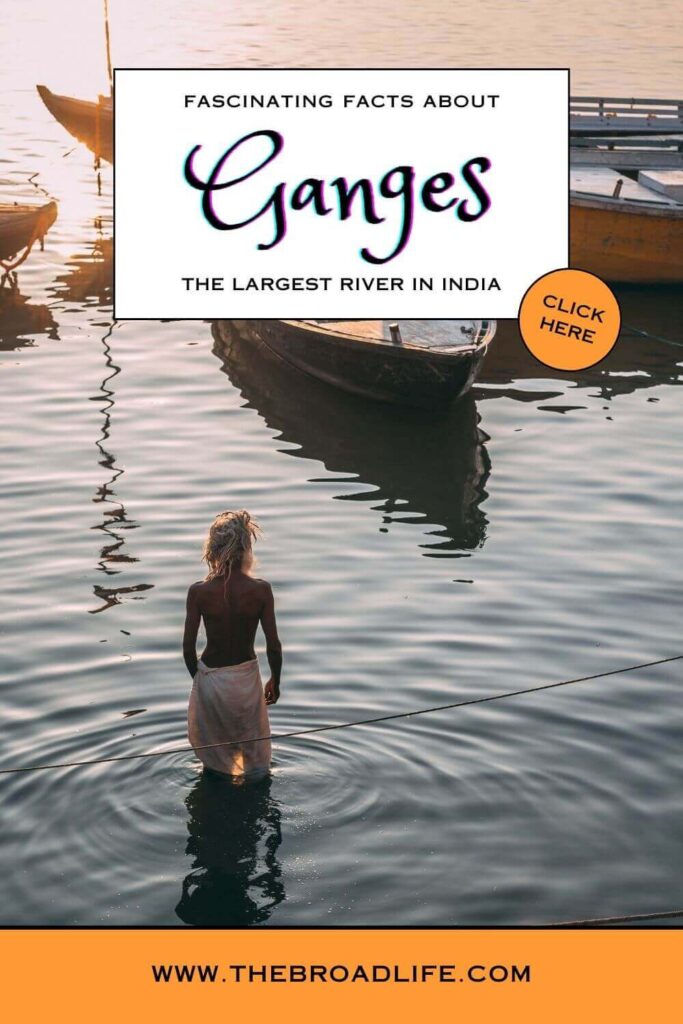
21 Comments
-
-
Sonia Seivwright
Thank you for sharing these fascinating facts about the Ganges River! It’s incredible to think about how this river has influenced many aspects of India’s history, culture, and religion. The Ganges River is a natural wonder and a treasure that deserves our utmost respect and protection. However, pollution, overuse, climate change, and development threaten its health and well-being. Let’s work together to conserve and restore this precious ecosystem for generations.
-
Sonia Seivwright
Thank you for sharing these fascinating facts about the Ganges River! It’s incredible how this river has influenced many aspects of India’s history, culture, and religion. The Ganges River is a natural wonder and a treasure that deserves our utmost respect and protection. However, pollution, overuse, climate change, and development threaten its health and well-being. Let’s work together to conserve and restore this precious ecosystem for generations.
-
Richard Lowe
Hmmm. A fascinating story. I’m fascinated by geopolitics, and it’s interesting how a river system like this affects the people of the area. Thanks for the tour.
-
LisaLisa
WOW how Interesting! Can you imagine all the different species under Water. I would love to see Gangs River!
-
Heather k
I learned so much about the river from this post! So interesting how it shapes the history of the area and people.
-
Monidipa
Your article on the Ganges River was truly captivating! The 20 fascinating facts provided a comprehensive and engaging insight into this iconic river. I learned so much and enjoyed the read immensely. Well done!
-
Cindy
What a great article about the Ganges. I had no idea The Ganges River is the most biodiverse river in the world. It’s so neat to know it has so many species of fish, amphibians, and reptiles.
-
Cinny
The Ganges river is BEAUTIFUL! Thank you for sharing why its so important!
-
rhea
Wow, I never realized the magnitude of the Ganges River until reading this article. The combination of being the longest river in India and the third largest in the world by discharge is truly remarkable. It’s no wonder that the Ganges has had such a profound impact on India’s geography, history, culture, religion, ecology, and economy for thousands of years.
-
May
You’re right about Ganges. it is practically one of the rivers i’m familiar with because it’s been mentioned several times in our asian history books.


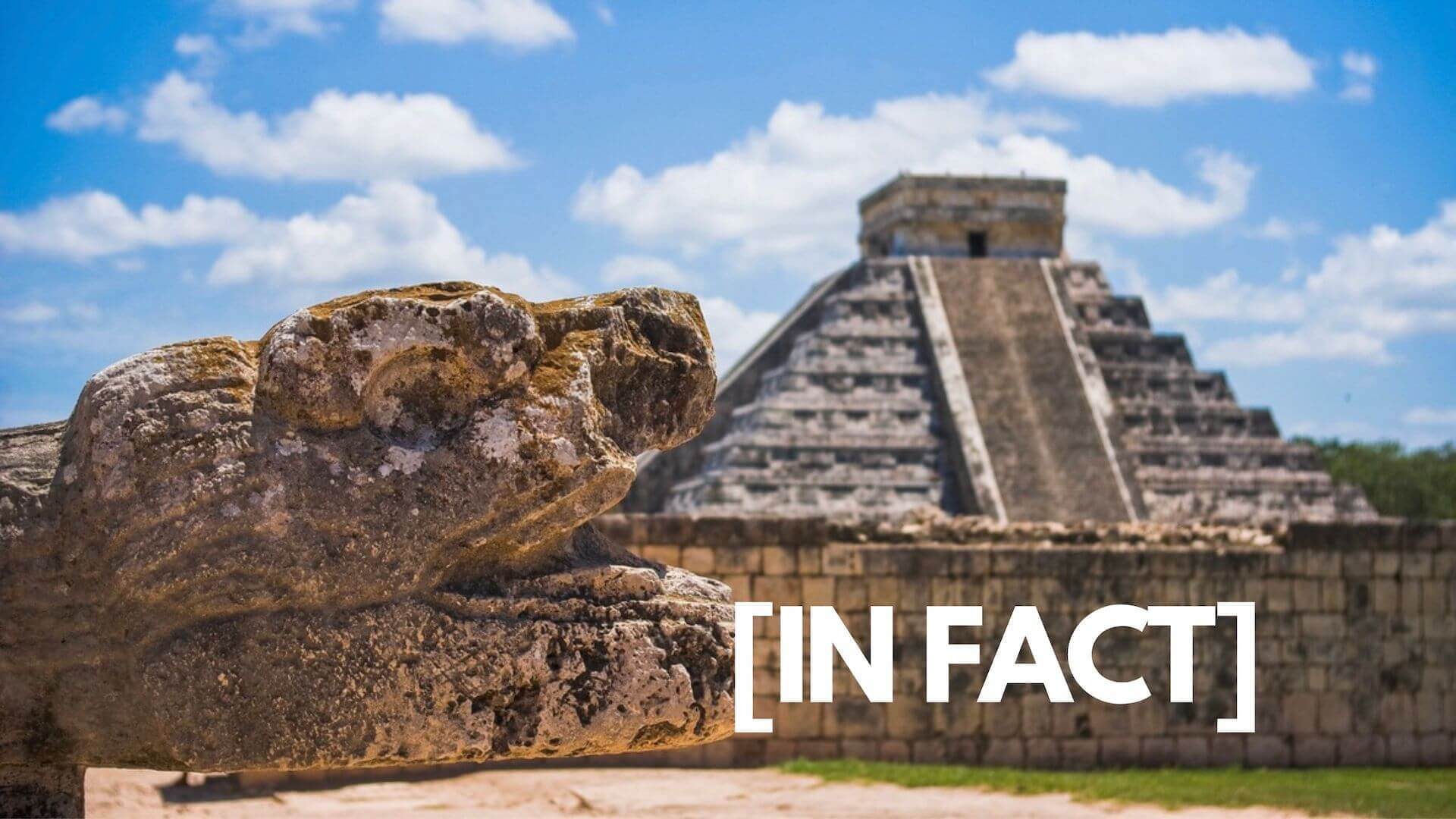



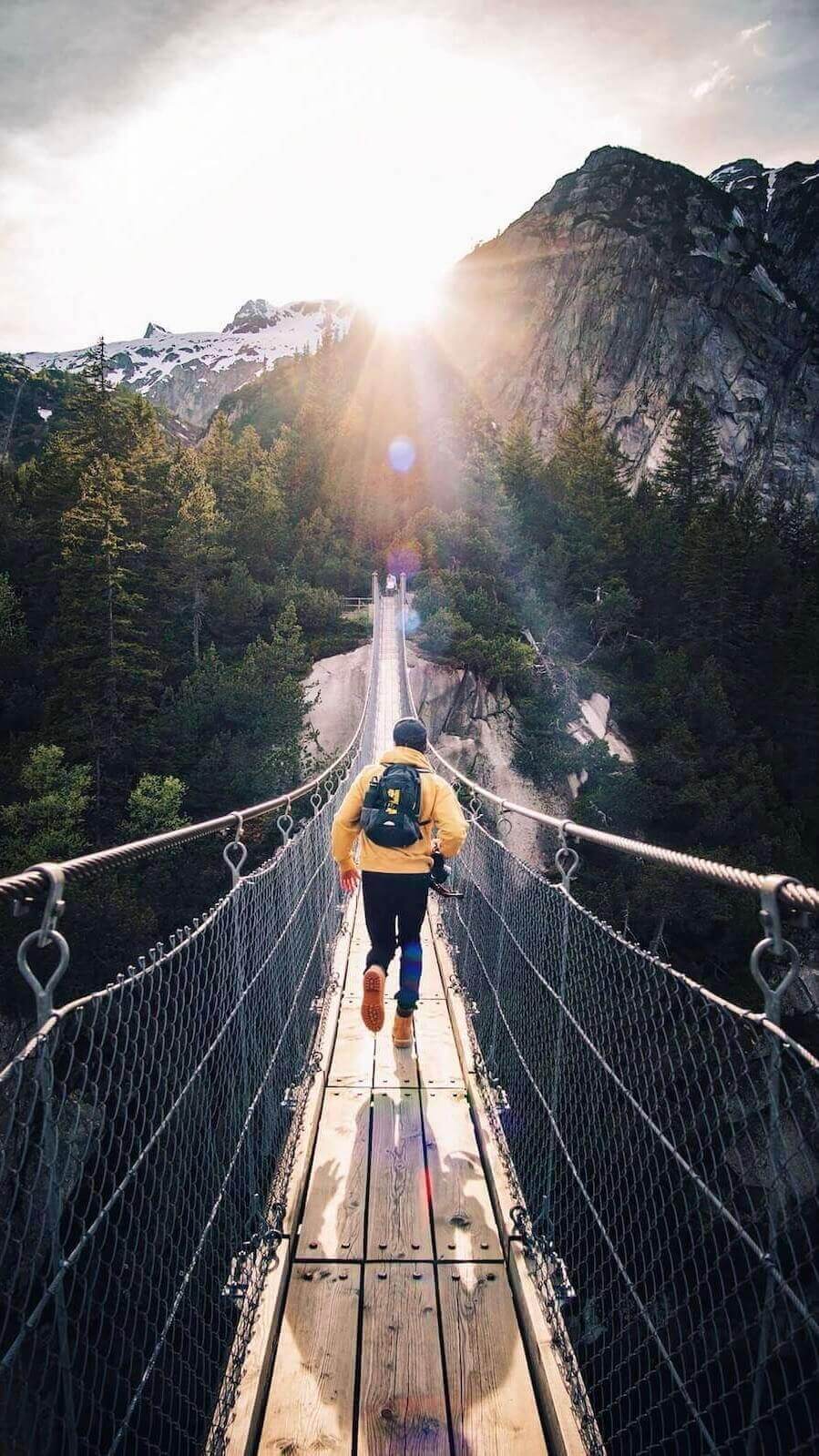
ellanor
I am planning to visit India soon and a trip to see the river Ganga is definitely on my bucket list. the glaciers in Uttarkhand look incredibly dreamy. I really hope that humans can reverse the pollution of the river, especially since I know now it’s one of the most biodiverse. thanks for sharing so many facts, I’m even more excited to visit now!